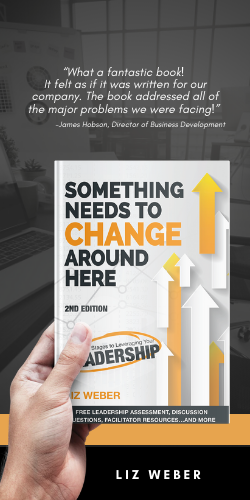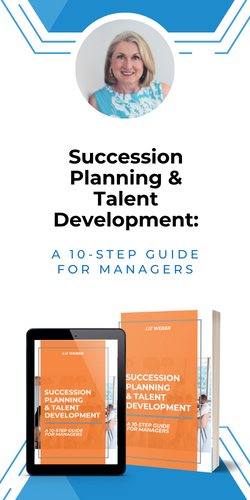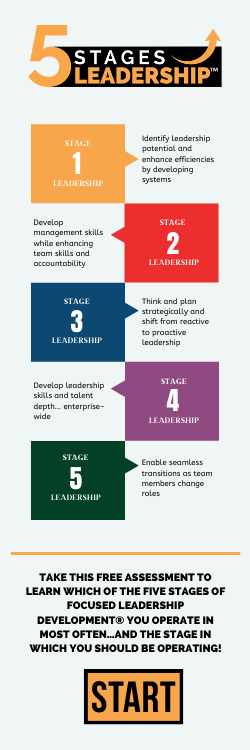
As a leader, you know your organization should have a succession plan. Yet you’ve not been able to justify taking time away from real work to create one. Why take the time to plan for something that might be helpful someday?
If that question sounds like something you’ve thought or said, please understand that a succession plan is more than a plan of who can or could take over positions in the future. It’s also a plan of who can temporarily step into positions now to keep things going when you or other team members are away. Succession planning is all about creating depth within your organization – now and in the future.
To help you understand how a succession plan can do both, let me share the following seven reasons to create a succession plan:
-
Prepares for the Worst-Case, Hit-By-A-Bus Scenario
This rationale is the one most often used to try to jolt business owners and leaders into creating a succession plan. Who can step in and cover your responsibilities – at least for the short-term – if something unforeseen were to happen to you and you could not return to work? Accidents, sudden chronic health issues, and other unexpected life circumstances can immediately end your ability to return to work. The work you were doing and the projects you were leading stop or stall, the information you had in your head but never communicated or documented is lost forever, and team members, customers, and others are negatively impacted.
Without warning, if you did not return to work tomorrow, how would your team, your department, your organization, and your customers be impacted?
If your answer to that question is something along the lines of, “We’d have to shut down,” you need a succession plan. You need to help your team identify (for your position and for all team member positions),
Who can step in and cover your responsibilities – at least for the short-term – if something unforeseen were to happen to you?
-
Identifies Candidates for Future Positions
The traditional succession plan, at a bare minimum, identifies who potential successors are for key positions. I suggest you look beyond just key positions and to review as much of your current workforce as you can to more thoroughly assess and strengthen your talent pool. When you do that, this basic plan then helps you assess all current team members and identify the most likely candidates – given current and potential attributes and skills – to take over specific positions in the future. By simply identifying likely candidates now, you, your board, and the candidates themselves are better able to project the potential team and skills your organization will have in the future.
-
Outlines How to Develop or Recruit Candidates for Future Positions
As you assess your current team to identify how they may best fit into your organization’s future, you’ll undoubtedly find many team members are lacking specific skills their future positions will need. Because of this, the succession planning process helps you identify and outline how to develop your current team members’ skills, and which positions will require you to recruit new team members with specific skills. Comprehensive succession plans also often include steps on how and where to recruit these additional team members to ensure you have the right people, with the right skills, in the right positions, at the right time.
-
Encourages Teamwork and Cross-Training Within Your Current Team
Succession planning also helps with your current team. When you train an individual or a few team members to cover your responsibilities while you’re away now, you’re developing your own “Back-Up Team.” Therefore, as you prepare for your next vacation or time away from work (for just a day or for several days), identify your Back-Up Team. Help them learn the various tasks for which they will be responsible and let each know what the other Back-Up Team members will be covering. Your team will pull together as they all learn new skills, learn to support one another, and learn to work together, as they support you, the clients and your organization.
-
Enhances Your Brand to Customers
When your Back-Up Team is trained and they coordinate well, whenever you are away, they can cover your responsibilities without negatively impacting customers or the business. If this isn’t happening now, customers may be hearing things such as, “I’m sorry. She’s on vacation this week. I’ll let her know you called. She’ll get back to you next week.” Comments such as this immediately let your customers know your company has limited depth and may be unable to service them as they continue to grow.
-
Enhances Empathy, Quality and Foresight
As your Back-Up Team learns the technical aspects of your various responsibilities, they are also learning the subtle nuances of how and why the work they’re now doing impacts others within the organization. They gain empathy for other team members as they better understand their challenges. Also your Back-Up Team will typically want to perform the tasks they’re performing on your behalf well, so they tend to pay closer attention to quality. Finally, because they’re gaining a better understanding of the larger organization, they are also developing the foresight and ability to better anticipate the consequences of their actions and decisions on team members and customers.
-
Develops Talent Deep and Wide
Succession planning done well creates talent deep and wide within your organization now, and as your organization will be in the future. Succession planning done well does not only focus on the most senior positions; it looks at every position within the organization and determines:
- What skills does this position need now and what skills will be needed in this position in the future?
- What skills does the current position holder have?
- What skills need to be developed with the current position holder?
- Who are the Back-Ups/Who else can cover these responsibilities in the short-term?
- What skills do the Back-Ups have?
- What skills need to be developed in the Back-Ups?
- Do we need to recruit for this position?
Answering these questions alone enables you to assess and deepen your current and future talent needs.
Succession planning isn’t simply planning for a gruesome run-in with a bus or some other tragedy. Succession planning is ensuring that whenever a current position holder is away or unable to perform his or her work, there’s at least one other trained team member who can slide in to keep things moving.
Succession planning takes time, but it can ultimately save your business.
Do you have a succession plan? You could! Click here to download a PDF eBook that shares my easy-to-follow steps to creating a clear, workable succession plan for your organization!
Copyright MMXVII – Liz Weber, CMC, CSP – Weber Business Services, LLC – www.WBSLLC.com +1.717.597.8890
Liz supports clients with strategic and succession planning, as well as leadership training and executive coaching.
























